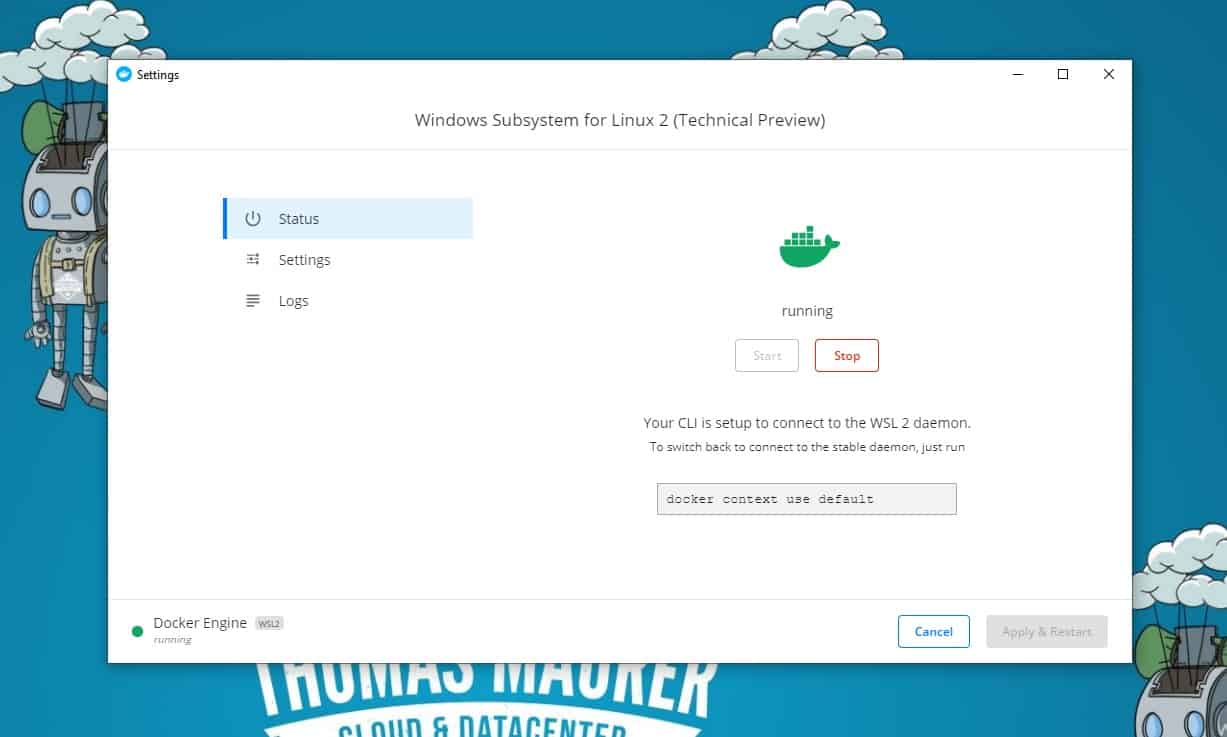Step 2: Customize and Push to Docker Hub
The Docker Desktop installation includes Docker Engine, Docker CLI client, Docker Compose, Notary, Kubernetes, and Credential Helper. Containers and images created with Docker Desktop are shared between all user accounts on machines where it is installed. This is because all Windows accounts use the same VM to build and run containers. Docker Desktop is an easy-to-install application for your Mac or Windows environment that enables you to start coding and containerizing in minutes. Docker Desktop includes everything you need to build, test and ship containerized applications right from your machine. Benefits include. Docker Desktop is an easy-to-install application for your Mac or Windows environment that enables you to build and share containerized applications and microservices. Docker Desktop includes Docker Engine, Docker CLI client, Docker Compose, Notary, Kubernetes, and Credential Helper.
Install Docker Desktop. With the WSL 2 backend supported in Docker Desktop for Windows, you can work in a Linux-based development environment and build Linux-based containers, while using Visual Studio Code for code editing and debugging, and running your container in the Microsoft Edge browser on Windows.
The last step used a Docker image which Microsoft publishes and maintains. Next step, create your own custom image. You should have a Docker ID, you probably created it to download Docker Desktop.
In your favorite text editor create a file called Dockerfile in the same C:temp directory. No extension, just Dockerfile. Paste in this code and save the file:
This tells Docker to use the same IIS base image, and create a layer that adds in the HTML you created in the last step. Instead of manually copying a file into the container, you will create an image with your HTML already inside it. To build the image, in your terminal, type:
Two things, first replace <YourDockerID> with your Docker ID. Also notice the “.” at the end of the line. That tells Docker to build in the context of this directory. So when it looks to COPY the file to /inetpub/wwwroot it will use the file from this directory.
You can run it:
And go to http://localhost:8081 to see the page - note your original container is still running and you can see it at http://localhost:8080.
Finally push to Docker Hub:
Docker Desktop For Linux
You may be asked to login if you haven’t already. Then you can go to hub.docker.com, login and check your repositories
Finally, stop and remove the running containers:

Key Features and Capabilities
The fastest way to design and deliver containerized applications and microservices on the desktop and cloud.
Docker Desktop Release Notes
Simple Setup for Docker and Kubernetes
No need to fiddle with VMs or add a bunch of extra components; simply install from a single package and have your first containers running in minutes. You get certified Kubernetes and Docker, for developers of all levels of container expertise.
Docker Desktop Installer
Certified Kubernetes
Setup a fully functional Kubernetes environment on your desktop with a single click and start developing and testing modern applications in minutes.
Docker Desktop Ubuntu
Application Templates and App Designer
Customize and share multi-service applications and service templates that are tailored to your organization. Pre-defined and customizable application templates adhere to corporate standards and automate configuration, eliminating error-prone manual setup. Intuitive Application Designer facilitates the packaging, installing, and managing of multi-service applications as a shareable package.
